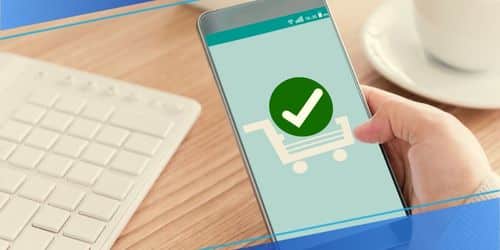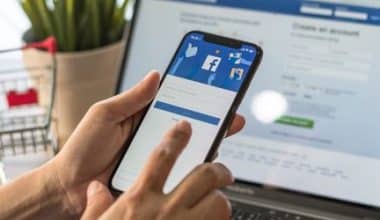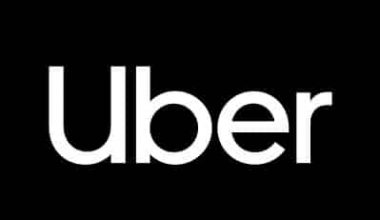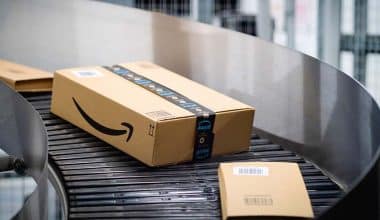Did you know that the highest open and click-through rates are seen in order confirmation emails for online purchases? Your clients will expect to receive order confirmation emails as soon as they make a purchase from your e-commerce store. These transactional emails not only inform and reassure customers, but they significantly increase order volume. Emails of order confirmation are important because they: Give customers reassurance, Get customers excited about their purchases. Develop consumer relationships by inviting them to make another purchase, follow your company on social media, or join a loyalty program.
In this post, you’ll learn what an order confirmation email is and see real-life examples that will inspire you to design your own. Let’s get started.
What is an Order Confirmation Email?
Order confirmation emails are transactional emails issued by e-commerce firms to notify buyers that their order has been received or processed.
Although an order confirmation email often includes key transaction facts such as a delivery location, items ordered, and payment amount, it is more than just a receipt.
An order confirmation email is the first step in converting one-time buyers into repeat customers, and repeat customers into brand evangelists.
An excellent order confirmation email piques the buyer’s interest, clears up any misunderstandings, and, most importantly, lays the groundwork for a beneficial relationship with your consumers.
Why Should I Send Order Confirmation Emails?
Emails of order confirmation are a crucial marketing tool. They reassure clients that their order information is correct and that they purchased from a legitimate company.
The term “ecosystem” refers to a group of people who operate in the construction industry. Given the widespread adoption of marketing automation technologies, failure to send a confirmation email can raise suspicion or anxiety.
What You Should Include In Order Confirmation Email?
An order confirmation email should be brief, to the point, and contain all the information clients require to feel confident about their purchases.
#1. Order Number
If the customer has questions or concerns regarding the transaction, an order number is crucial. When customers contact customer support, they will need to submit their order number in order to access the purchase details. Insert the order number at the top of the email.
#2. Consumer contact information.
Add the customer’s name, phone number, and email address, if they offered one. This reassures the consumer that they will receive status updates, if applicable, at their specified phone number and email address.
Additionally, include the billing and delivery addresses (even if they are the same), so the customer can be confident the information they supplied was right.
#3. Shipping address
Even if the customer’s shipping address is the same as their billing address, double-check it. Clients may request shipment to a different area, so allow them to confirm these data and guarantee the cargo is delivered to the correct address.
Enable them to change data like the shipping address or method before the item leaves the warehouse.
#4. Order Summary
List the products that will be shipped, including the following information:
- Product name (add an image, if possible).
- Quantity.
- Color and size.
- Price per unit.
- Tracking link (if available).
Make sure the email contains all of the relevant information so the consumer does not have to visit your website and sign in or contact customer support to confirm the details of their order. Provide a thumbnail image of each product.
#5. Break down the cost.
Ascertain that your customer understands what they are being charged for. All charges should have been summarized at checkout, but you want to make certain.
Surprise fees are strictly prohibited! Provide an itemized list of each product, the quantity purchased any associated taxes and fees, and any savings from discounts or promotional coupons. Specify the payment method so that the customer knows where the charges were applied.
#6. The shipping method and expected delivery date.
Give as much information regarding shipment as possible. Confirm the shipment option (standard, expedited, or overnight), the date the order is expected to depart your warehouse, and the date the carrier is expected to deliver the item. Provide a verbatim copy of the customer’s message in the email if they provide special delivery instructions (for example, “leave the item on the porch” or “only deliver after 5 p.m.”).
#7. Your contact information and methods.
Inform clients how to contact you if they have any queries or problems with their orders. Add your email, phone number, social media handles, and any chat apps where you offer customer assistance.
How Can an Order Confirmation Email Increase Customer Satisfaction?
Because your customer has already completed a transaction, order confirmation emails do not need to be overly salesy.
But, there are still ways to cultivate the consumer relationship and leave them with a great impression of your business.
Here are some examples of how you can accomplish this.
#1. Provide customers assurance
After making a purchase, customers anticipate receiving an email shortly after. If you don’t send one, the first thing that comes to mind is that they’ve been duped. Unfortunately, I’m sure we’ve all been there!
Customers receive order confirmation emails as proof that their transaction was completed successfully. This immediately develops trust with them, and they can sit back and rest knowing they weren’t duped.
The email should also outline the next steps and what to expect, such as when the customer should receive the shipping information and order tracking number for the delivery, what to do if the customer needs to return any merchandise, and how they can contact your support team if they require assistance.
#2. Assist in the establishment of long-term customer relationships
Customers who are loyal and return are the lifeblood of your online business.
Believe it or not, order confirmation emails help create a long-term relationship with clients since they learn to trust your procedure and appreciate the rapid contact.
In fact, 64% of customers believe that confirmation emails are the most valuable sort of email. Adopt the mindset of leading with value and make sure you send these emails to consumers as soon as possible and with the essential information they expect.
#3. Reduce the number of times a consumer needs to contact assistance.
Order confirmation emails inform your customers of the next steps and where to get help.
Also, by providing accurate information to customers, you will reduce the frequency of support calls or chat tickets because customers will not be left wondering where their order is and when it will come.
Best Practices For Order Confirmation Emails
Order confirmation emails are the most straightforward marketing email you’ll ever send. Still, you should adhere to a set of best practices in order to deliver a positive customer experience, increase conversion rates, and engage customers.
#1. Deliver order confirmation emails immediately after a transaction.
Getting a confirmation email as soon as possible reduces post-purchase worry. Don’t leave customers hanging. You may set up email automation to send an email just after purchase. Consumers are most enthused about a purchase just after they make it, so this is an excellent moment to foster good thoughts about your company.
#2. Make sure the order confirmation email is mobile-friendly.
Emails must look well on mobile devices as well as desktop computers. Your buyer most likely made their purchase while on the run.
In fact, mobile devices account for 72.9% of all e-commerce purchases. Furthermore, 60% of people check their email while on the road, so your confirmation email is likely to be read on a mobile device. Offer easy-to-click links, language that suits their device’s screen, and a clean email design and layout.
According to statistics, 40% of users will switch to a competitor after a bad mobile experience, but an alarming 84% have had difficulty completing a mobile transaction. A confirmation email suited for mobile devices promotes trust.
#3. Maintain your brand.
Order confirmation emails don’t have to be boring; they should be brief and include all pertinent information. Throughout, use your brand’s colors and logo, as well as a catchy phrase that stimulates excitement (for example, “It’s on its way…” or “Thanks for your order!”). Don’t be hesitant to inject individuality into your messaging.
Celebrating the purchase. Make the customer feel pumped about it like they just took a big step (especially if it’s a lifestyle item or a big purchase).
#4. Create a subject line that will both enlighten and interest your customers.
Some brands use a matter-of-fact subject line for their order confirmation email (for example, “Your Instacart order receipt” or “Your order #12345 has been placed.”) Others inject more personality into their subject lines.
#5. Give people a chance to interact with your business.
Order confirmation emails are crucial for boosting customer engagement and retention, so don’t pass up the opportunity. Engagement is highest shortly after purchase, so strike while the iron is hot.
Here are some CTAs to include at the bottom of your email:
- On social media, follow the brand.
- Refer a friend or join a loyalty program.
- Join your mailing list.
- Use a coupon code to get a discount on your next purchase.
- Shop additional products.
- Examine the FAQs or your blog.
#6. Thank the consumer for their purchase.
Don’t forget to thank the customer for picking your brand. When shopping online, customers have nearly limitless options. Thanking clients for their business helps them feel valued. With the mainstreaming of internet buying, brand loyalty is becoming increasingly difficult to come by.
Don’t lose consumers through insignificant issues. Make the most of every chance to create an exceptional client experience.
#7. Send a second shipment confirmation email as well.
Give clients another reminder by email or SMS (if the customer opts in) when the item ships, even if you previously provided the delivery date in your initial confirmation email. A separate shipping confirmation email offers clients peace of mind and gets them enthusiastic about the delivery of their merchandise.
Recall that the delivery confirmation email gives you another chance to engage clients by employing the CTAs listed above.
How Long Should a Confirmation Email Be?
Confirmation emails should be brief and to the point. Thank the client for their order. The term “ecosystem” refers to a group of people who operate in the construction industry (carrier, shipping date, and expected delivery date).
What are Some Examples of Effective Topic Lines?
Subject lines should be brief and to the point, but don’t be afraid to inject some personality if it fits with your brand voice.
For example, you may write “Order confirmation for [insert name here] from [insert brand name].” The term “ecosystem” refers to a group of people who operate in the construction industry.
The Importance of Automating the Entire Transactional Experience
A more streamlined user experience is created by automating the complete transactional experience. Furthermore, automating repetitive procedures like these will save your staff a significant amount of time and money.
Once your automation is in place, communicating with your consumers becomes fully hands-off. You may continuously extract data points from many sources and have tailored emails sent out automatically based on the triggers you set up.
Because your workflows operate without you having to manually touch any buttons, your team can focus on more critical activities such as strategy and improving the customer experience.
For example, someone paying for an order should cause your fulfillment provider to initiate the process of putting the order together, selecting the appropriate packing, and sending the order to your customer immediately away.
The transactional email flow will be triggered on the customer’s end by your automation technology, ensuring that customers receive timely updates throughout the process. Then, as the brand, you appear to prioritize their experience by connecting with them frequently.
The idea is to pick an automation product that integrates well with the other tools in your e-commerce tech stack so that your fulfillment data can automatically sync with your ESP, SMS tool, and other tools.
Finally, the idea is to create a well-rounded customer experience in which you can quickly draw data points from numerous sources to customize how you interact with customers.
Final Words
Never undervalue the value of an order confirmation email in establishing consumer trust, encouraging repeat purchases, and fostering loyalty. Order confirmation email templates may be created using email marketing automation software, and automatic emails can be sent as soon as a buyer makes a purchase.
- WHITE LABELING: Detailed Guide To How It Works
- SOCIAL MEDIA ENGAGEMENT: How To Increase Your Engagement Rate
- Email Marketing Platforms: Overview, Common Features, Comparisons
- SMALL BUSINESS EMAIL MARKETING: Meaning, Best Email Marketing Software, and Tips






